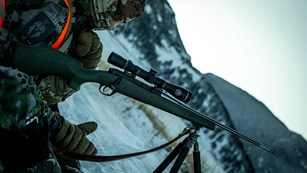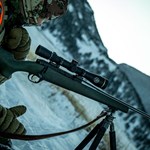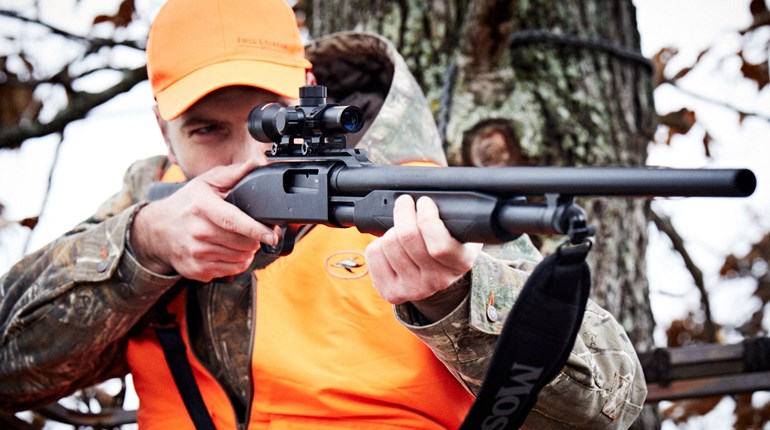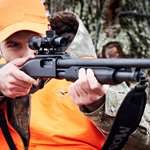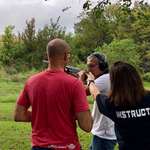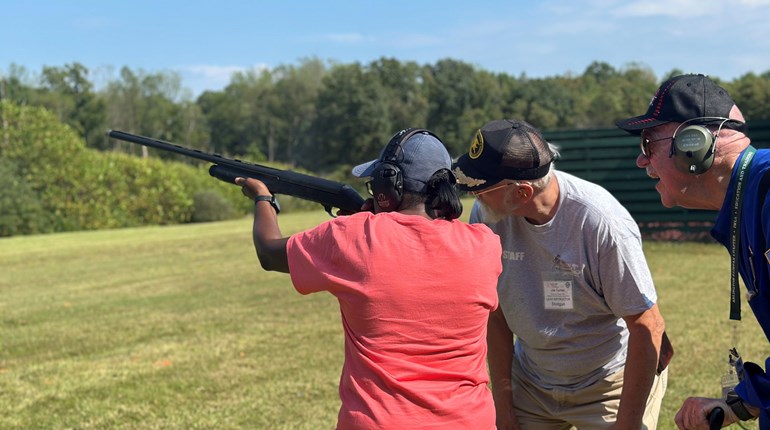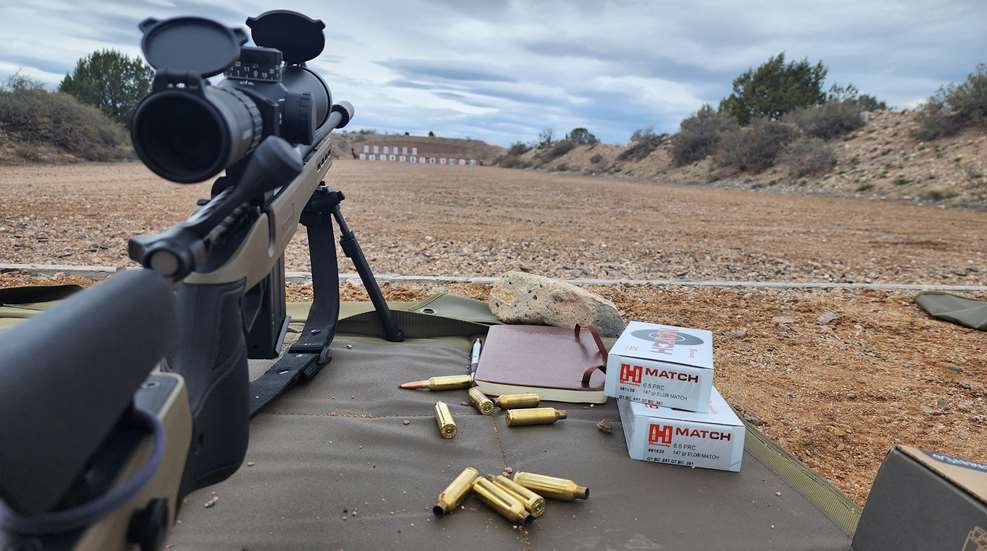
Years ago, I was sighting in a 12-gauge slug gun for a baited bear hunt. I wanted the gun zeroed at 50 yards, because I expected very close shots, but the sighting-in process was frustrating. I couldn’t get my elevation right—I dialed all the way to the end of the scope’s range, but I still wasn’t on target, and I had no adjustability left. What to do?
I took the gun to my local sporting goods store, and their solution was rudimentary but effective: They cut a thin slice of plastic sheeting and tucked it into the rear scope ring. This lifted the back of the scope up just a bit so it was tilted slightly forward on top of my gun. Now I could dial my elevation turret back to a more normal level, and I was able to sight in the gun the way I wanted it. The tilting of the scope increased my range of adjustability.
A canted rail has the same effect—it allows you to mount your riflescope at an angle relative to the bore of the gun, allowing you to get the full use of your scope’s adjustability range instead of only half. This is usually a factor at longer ranges beyond 500 yards (my slug gun was kind of a quirky exception).
The rest this explanation will make more sense if you read my article “Scope Adjustments Made Simple” first. The major points:
- Your scope’s erector tube holds the magnification lenses and the reticle.
- The erector tube is inside the scope’s main body tube—it’s a tube within a tube.
- You adjust your elevation by dialing your top turret in the direction you want the bullet to go. Bullet hitting low? Dial up, because you need the point of impact to come up.
- When you turn your elevation dial up, you’re bringing the crosshairs up by relieving spring pressure on that erector tube. The erector tube is physically moving up (and the reticle with it), and it can only move so far before it runs out of space. Moving the reticle up sounds counterintuitive, I know, but that’s how it works.
As an example, your scope might have 40 MOA of adjustment—20 MOA up and 20 MOA down. You’ll want to zero the gun at 100 yards in the center of that adjustment range, as this is where the optical image is clearest, but this means you can actually only use half of the range—the bottom half, to be specific. There’s really no circumstance where you’ll be dialing down more than a few clicks, since your bullet hits its target at 100 yards and under. You’ll only be dialing up, because as you shoot farther and farther past 100 yards, your bullet will drop more and more. To compensate, you’ll dial up, which is actually moving the crosshairs up. But you can only dial up 20 MOA. The 20 MOA you could dial down (but don’t need to) just sits there, unused.

Image courtesy warnescopemounts.com
Just like the plastic shim in my rear scope ring, a canted rail lets you mount the scope pointed slightly downward on top of the rifle. This means the reticle will point lower than it did before by whatever the measurement on the rail is (20 MOA is common; this equates to about 20 inches at 100 yards). You now have to hold the rifle aimed 20 inches higher than you would with a non-canted rail just to get the reticle on the bull’s-eye at 100 yards.
Now you can zero your rifle at 100 yards right in the middle of the scope’s adjustment range, just like you did before. You still won’t have much reason to ever dial down, but because you started 20 MOA lower, you still have another 20 MOA you can dial up.

Do you need a canted rail? That depends on how much adjustability your scope has and how far you plan to shoot. Most hunters won’t need one. Shooters who prefer a ballistic reticle for holding over might not need one. Long-range shooters who plan to dial their elevation turret for every shot very well might, especially the farther out they plan to go. The litmus test is to sight in your rifle at 100 yards and see how much adjustability you needed to use in order to get on target. Now, check your ballistics app and see how much drop your bullet has at the farthest distance you ever plan to shoot. Can you dial your scope far enough to compensate for that drop? If not, you either need a different scope or—a much simpler solution—a canted rail that will give you the increased adjustability range you need. Even if you can dial far enough, if it gets you to the edge of the adjustability range, you’ll get a cleaner, clearer optical image when the erector tube is closer to the center of the adjustability range.
Bottom line: Under normal conditions, you’re only able to utilize one half of your scope’s vertical adjustability range. A canted rail allows you to increase the adjustability range by physically angling the scope on the gun. Long-range shooters who are using their elevation turrets to dial for distance might find this additional adjustability essential to seeing their target clearly and being able to hit it accurately and consistently.








